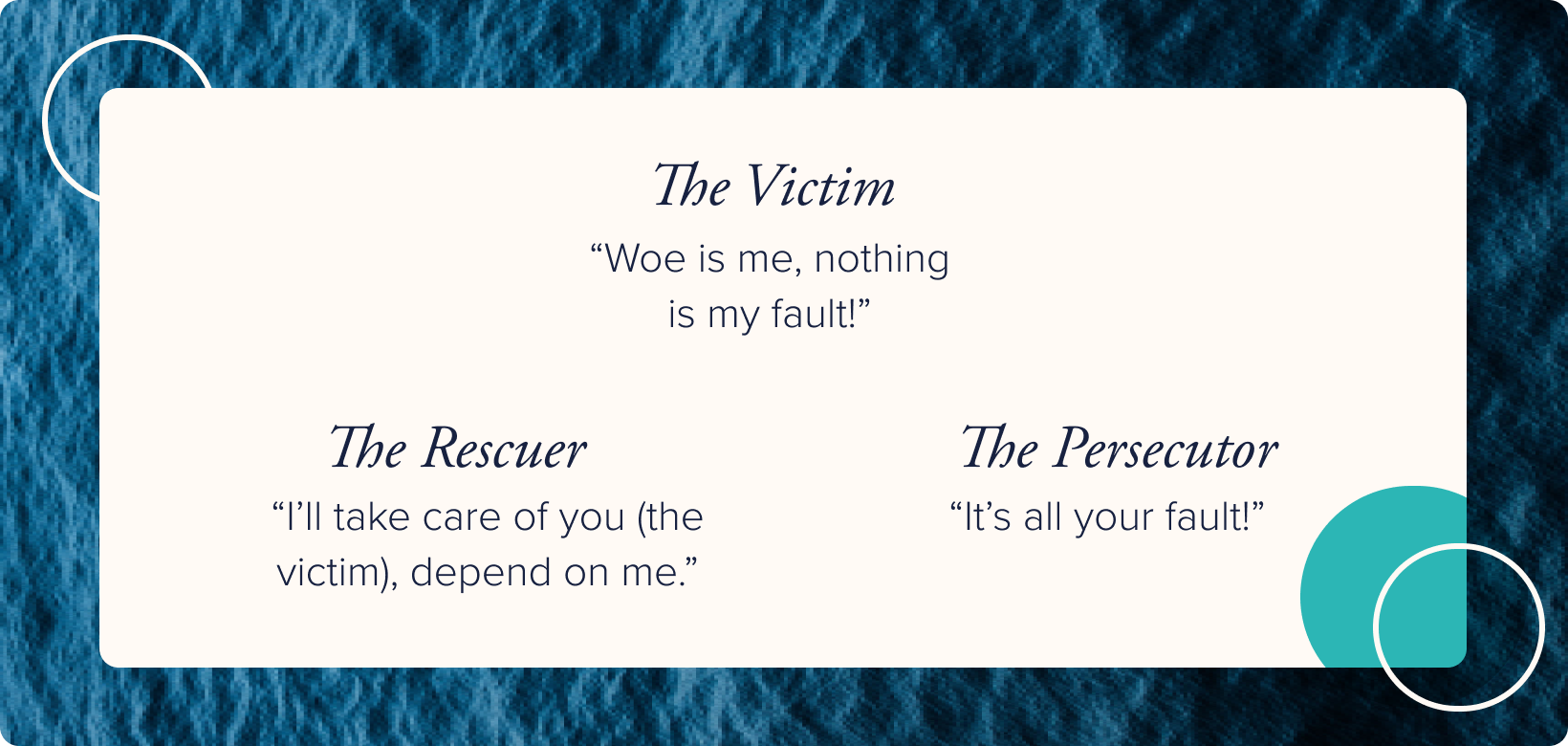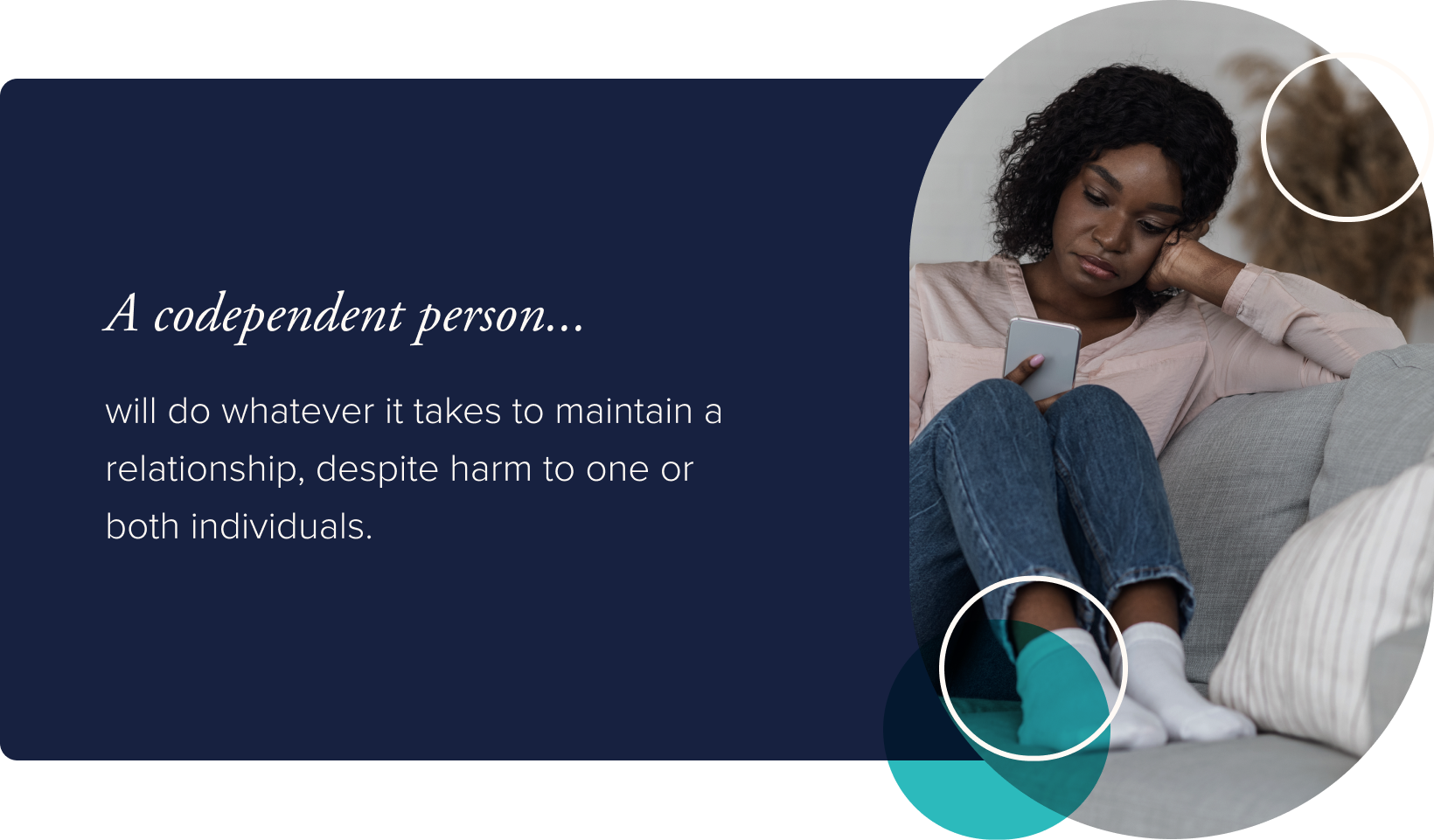
What is the Codependency Triangle

One-on-One Counseling in Arizona for Life's Challenges
Every day is a chance to start over. Our trauma-informed therapists will meet you where you are — in person or online — so you can process your experiences and become the person you want to be.
Codependency occurs in imbalanced relationships and feeds the cycle of destructive behavior or toxicity. A codependent person in a relationship may not always act consistently. They may shift how they feel about themselves or how they present themselves in order to maintain the relationship.
Codependency is often a learned behavior through observation of parents or family members growing up. It’s common among relationships involving people who struggle with substance abuse, dependent personality disorder, or low self-esteem.
History of the Codependency Triangle
The codependency triangle was created back in the 60s by Dr. Stephen Karpman to describe role patterns he observed in dysfunctional relationships. Each of the three points of the triangle was associated with a role. The three roles are:
- The Victim—“Woe is me, nothing is my fault.”
- The Rescuer—“I’ll take care of you (the victim), depend on me.”
- The Persecutor—“It’s all your fault.”
Both the persecutor and rescuer roles hold power over the victim. The rescuer, although seemingly a less negative role, actually keeps the whole cycle spinning. The rescuer enables the victim and allows them to act and believe that they are helpless, rather than taking any accountability themselves.

Shifting Roles Creates Drama
Though it has three roles, the triangle describes a relationship between only two people. Dr. Karpman referred to it as the drama triangle because both people in the relationship shift roles, which creates instability and “drama.”
It’s not uncommon for two people to fall habitually into set roles and continue to play those until something changes or the other person behaves unpredictably. Then, roles may shift, and the more shifting that occurs, the more drama there is going to be.
Read our related article for a complete guide on codependency.
Defining Codependency
Codependency, sometimes referred to as “relationship addictions,” consists of unhealthy behaviors in relationships where someone depends on and prioritizes someone else over themselves. A codependent relationship is often one-sided, emotionally harmful, or even abusive.
The giver in the relationship disproportionately gives to the taker and constantly sacrifices their own needs to do so. The “taker” may often behave carelessly and recklessly, and typically doesn’t offer the same support to their partner in return.
In a codependent relationship, people often lose their sense of self. Their life and happiness are attached to another person, or they become so consumed by the other person that they neglect to think or take care of themselves.
A codependent person will do whatever it takes to maintain a relationship, despite harm to one or both individuals. Both partners play a role in feeding the fire that sustains the unhealthy patterns of the relationship.
Codependency can occur in any kind of relationship. Romantic partners, family members, coworkers, and bosses could all potentially form into a codependent drama triangle.
Read our related article for more information on codependency in families.

What Does the Triangle Have to Do with Codependency?
The frequently shifting roles mean the power remains with one individual in the relationship. But you can’t hold power over someone without that someone. The codependent person shifts into different roles as a response to the other person’s actions.
The Codependency Triangle and Narcissism
Narcissists are often codependent, but codependent people are not always narcissists. A narcissistic person will want to keep their partner around and continue to benefit from the other’s sacrifices.
The Narcissist Can Play All Three Roles
A narcissist will often take on the prosecutor role in the drama triangle. In narcissistic abuse, the narcissist will break down their partner until that other person feels dependent on them.
Narcissists can also be the rescuer, saying things like “I’ll do anything for you. I’m worth something to you due to my actions,” making the partner feel saved or indebted to them.
Or, the narcissist can play the victim role, saying something like “I have nothing and no one,” in order to keep the partner around through guilting them or letting them feel like the savior.
By taking on the roles in the triangle, it’s easier to keep the other person around and in their grip. They want to hold on tight to their partner and shift through the roles until they get what they want. It can be used as a confusion and manipulation tactic that the partner may, or may not, be aware is happening.
Breaking Out of the Codependency Triangle
Breaking out of a codependency triangle can be challenging. Sometimes people don’t even realize they are in one in the first place.
.png)
Take Care Of Yourself
To break the cycle of codependency, it can be helpful to take a step back from the relationship.
Be more selective with the support you offer to minimize the “rescuing.” If you identify with the persecutor, offer more support than challenges.
It’s not easy for everyone, but being selfish once in a while is a good thing. You don’t need to jump to help others constantly. Look out for yourself and your needs.
Read our related article for more information on healing from emotional abuse.
Talk to Someone
Therapy is another significantly helpful aid in learning how to remove yourself from a codependency drama triangle. Therapy can be beneficial to both people in the relationship, whether you do it as individuals or together.
Going to therapy can help you:
- Recognize unhealthy behavior patterns in your relationships
- Safely and successfully work towards creating healthier relationships
- Removing relationships that no longer serve you
- Discover why you find yourself in those types of relationships in the first place
Read our related guide for an in-depth look at the benefits of therapy.
Talk to Inner Balance Counseling Today
Of course, in any relationship, there are times when you give a little more and times when you take a little more. It’s not going to be 50/50 all the time, but you should have relationships that are mutually supportive and satisfying.
Inner Balance Counseling offers expert trauma and mental health care to help people create lasting, positive change in their lives. If you find yourself captive in a codependent relationship, no matter what role you play, we can provide individualized therapy to help you take control of your life and your relationships.
Reach out today to connect with a mental health professional and take the first sep towards the life you deserve.
Related blog articles
Sign up for our newsletter
Sign up with your email address to receive news and updates.
Get started
Request a consultation

-03%201.png)




